Some photos I took after leaving Holden Arboretum of a branch of the Scenic Shagrin River.

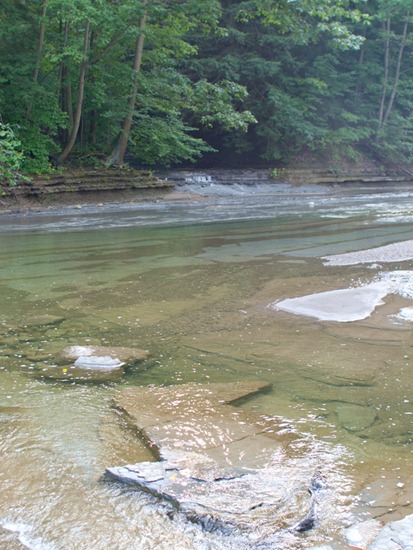
While in Palo Verde last summer, I met Ramsa Chaves, a graduate student at Dartmouth College under Brad Taylor and UCR licenciatura graduate. She used the OTS station in Palo Verde as a headquarters for her research on insect communities associated with streams in the Guanacaste region. Her and one or more assistants traveled to local streams that varied in surrounding land-use and sampled emergent insects during the day, returning to sort and process the catch in PV in the evening. I helped out one of those days to get a taste of her extraordinary and ambitious research project. From memory, Ramsa aimed to examine responses of insect communities to land-use differences and how these responses play-out in aquatic-terrestrial linkages.
We sampled two streams that she and Jereme had set traps in and around three days prior. In Quebrada Amores (lovers stream) within Reserva Biológica Lomas de Barbudal emergence traps were emptied. The floating, triangular traps, as suggested by their name, capture adult insects as the emerge from the stream to breed and feed in the surrounding terrestrial environment.
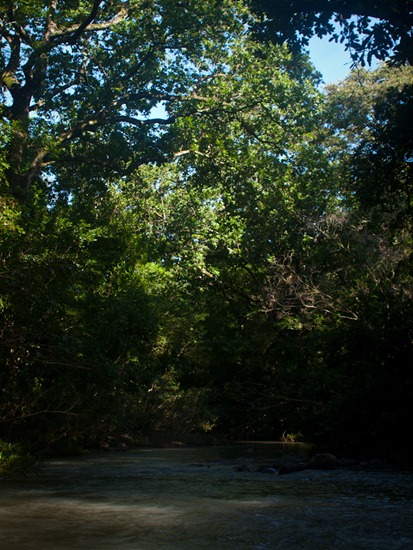
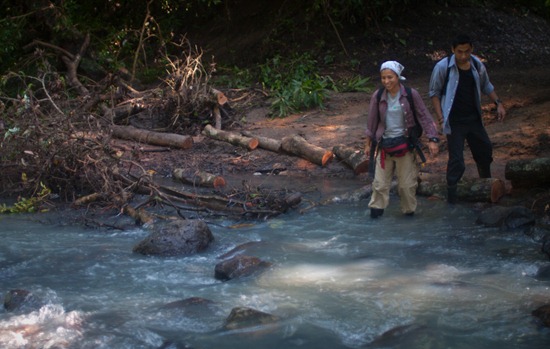
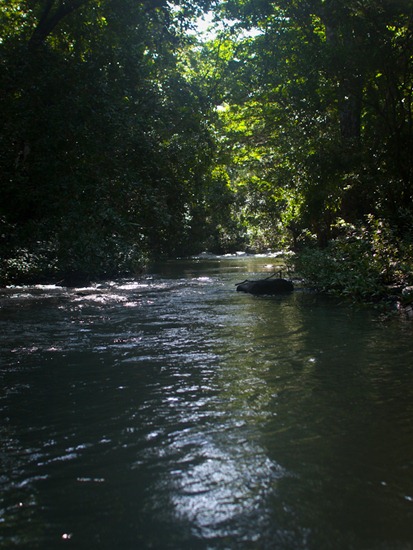
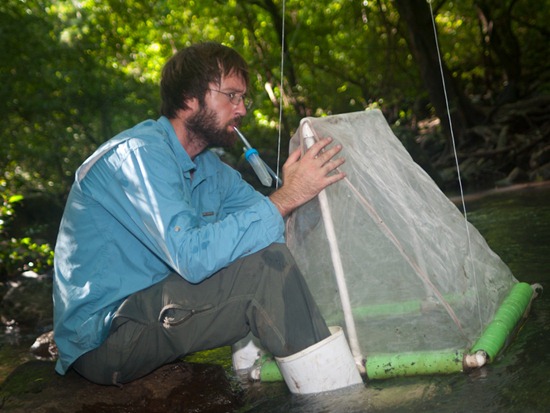
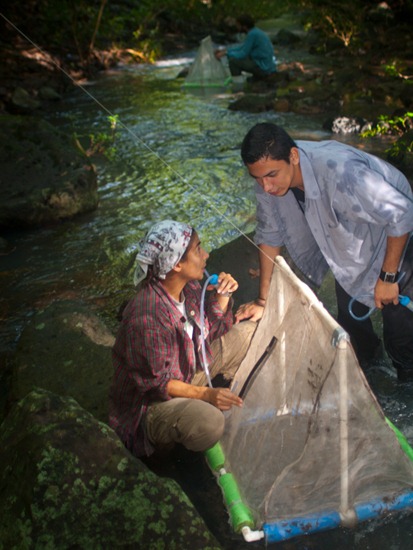
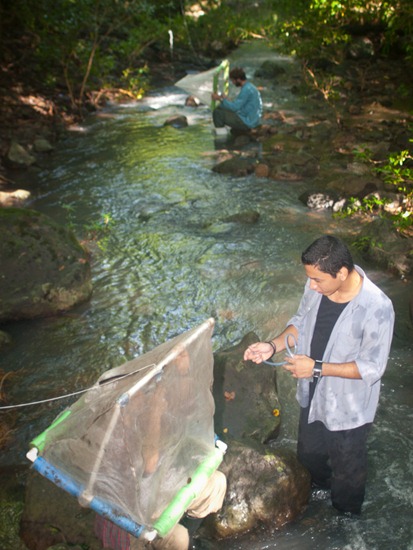
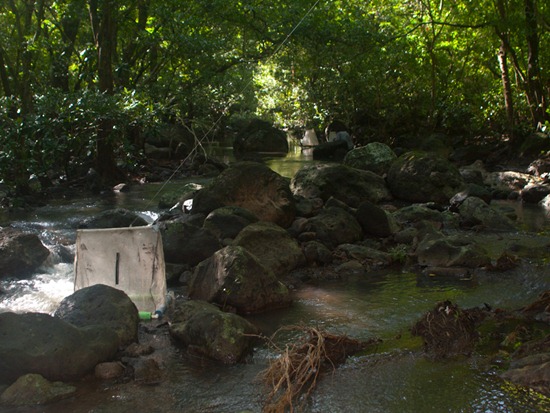
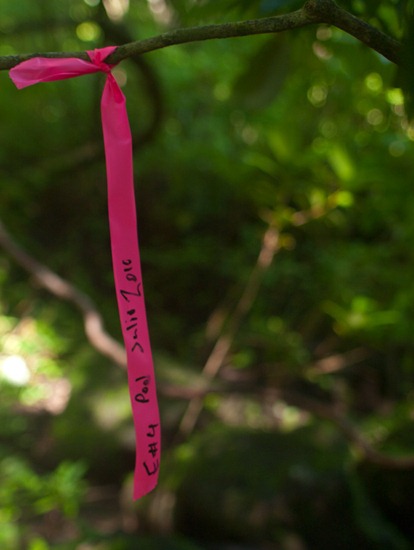
Río Pijije drains agricultural and residential land, in contrast to the protected, forested land-use surrounding Quebrada Amores. Emergence traps had settled ashore after a flash flood, and were not sampled, a common occurrence in the rainy season in dry forest areas. Sticky traps (transparent over-head sheets covered in glue, basically) were placed from 10 to 100 m from the stream edge to sample flying insects as they moved from the stream outward into the the forest or, in this case, cow pasture. In addition to sticky traps, we sampled using butterfly nets, which are not pictured here (probably for two reasons (1) I was sampling and (2) I knocked my net into a large paper wasp next and was promptly stung many, many times. It was an extremely memorable event for me). Both sampling methods have hopefully painted a picture for Ramsa showing how insects respond from and to a stream draining catchment with different land-use patterns.
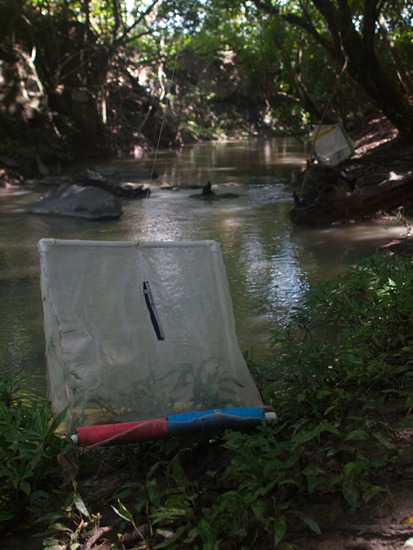
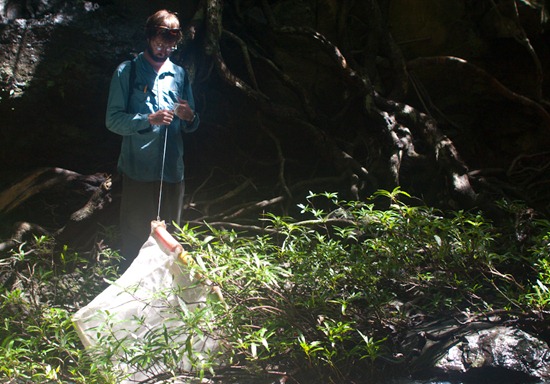
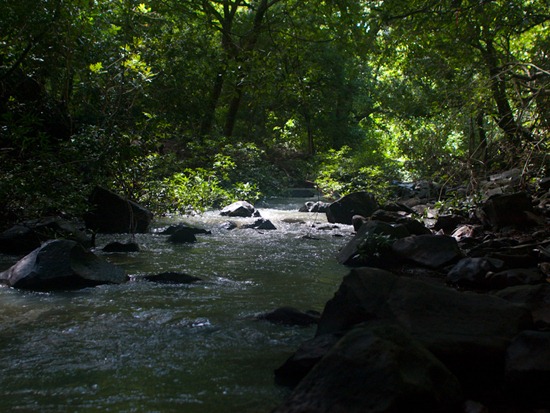
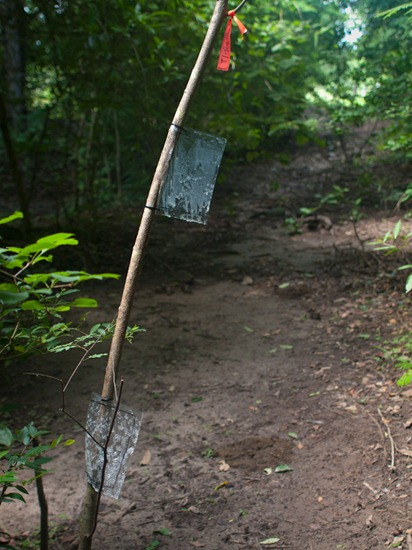
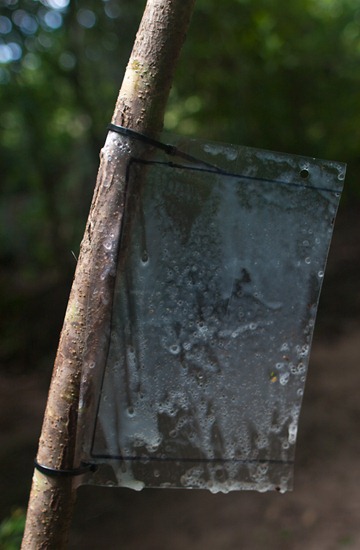
Rio Claro receives a substantial amount of leaf-input from surround trees, particularly in the dry season. Organic matter processing and the importance of these inputs are little study in tropical streams, especially in comparison with temperate systems, where we know that excluding this vital energy source dramatically changes in-stream communities, which can then affect terrestrial, riparian ecosystems. Given the great abundance of invertebrates, like shrimp, that are likely shredders and biofilm-grazing snails, it’s likely that tropical streams operate similar to temperate streams… Anyway, here’s some leaf packs.
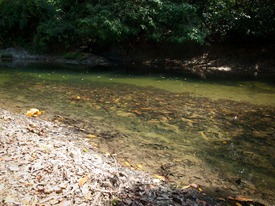 |
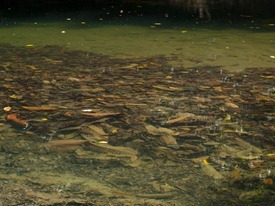 |
North Creek is stocked with trout and it seemed to be a major attractant for locals. Although the stream is catch-and-release only, there was a freshly killed fish head in one of the slower pools of the stream, just after a fisherman left the area. Other than that gruesome image, the stream and riparian zone made for a excellent place to relax in the sun and read Four Fish.
Last week’s intense rain-on-snow precipitation event caused bank overflow at Jennings’ Woods, destroying some riparian zone experimental plots. Another large rain event occurred/is occurring this weekend, and I was able to snap some photographs of the river at bank height. This corresponds with a gauge height of approximately 5 ft at the USGS West Branch of the Mahoning Station near Ravenna, Ohio. Below are a few panoramas: (1) just upstream from the McCormick Rd bridge, (2) at the second major bend, and (3) a decent way into the property, where the last of Peter’s plot were.